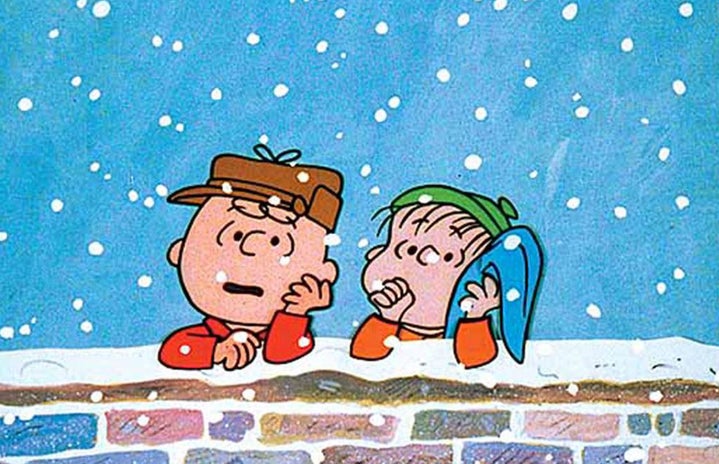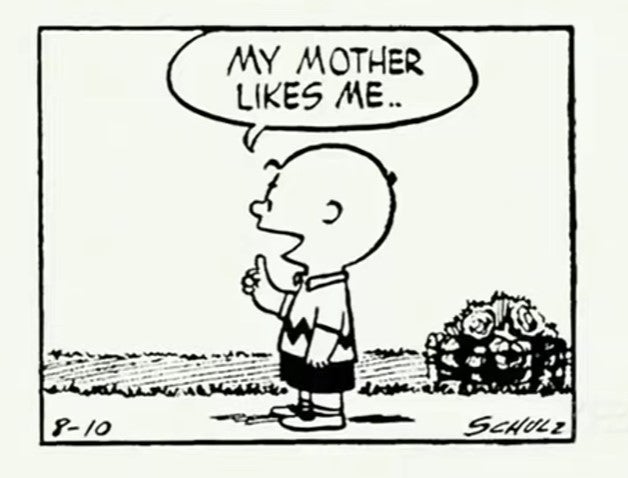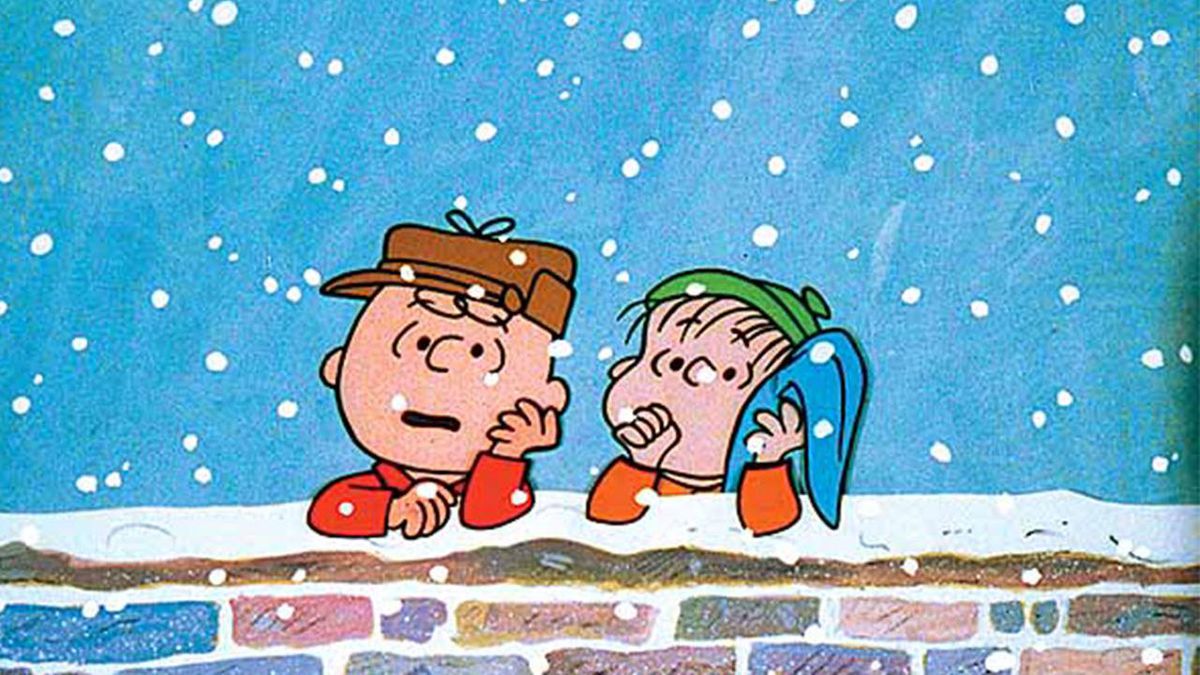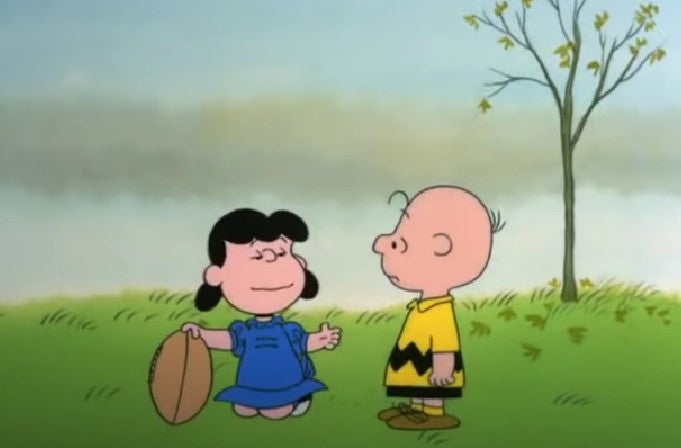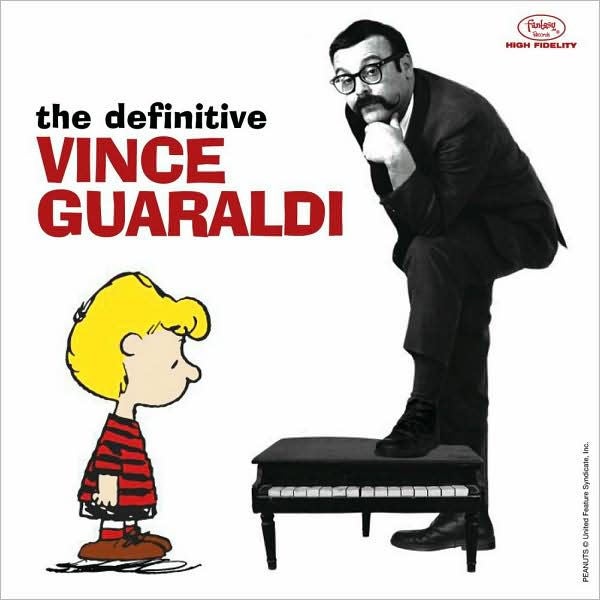Can we really call it Christmas without “Linus and Lucy”? Halloween without the Great Pumpkin? Thanksgiving without Charlie Brown and that cursed football? It’s clear that the Peanuts cartoons are holiday staples in America, and deservedly so.
As someone whose family made it a point to watch A Charlie Brown Christmas every year, maybe it was just ingrained in me to love these cartoons. But I doubt that. A greater part of me believes that these cartoons are popular for another reason—a reason that’s beyond surface-level explanation like brand name or some mere exposure effect.
This had me wondering: “What exactly made these Peanuts specials, well… special?“
I liked to describe the Peanuts cartoons as having a sort of “childlike charm,” but not in a particularly cheerful or sugary way. In fact, I found some of its scenes to be more sober, or subdued, for children’s entertainment (Charlie Brown himself said that he “found the holidays depressing”). That just gave me even more trouble when I tried to put a finger on it. But now, I think I’ve got it.
The key ingredient to Charlie Brown’s popularity can be boiled down to one word: authenticity.
Let’s take this from the very beginning.
Early CHARLES SCHULZ COMICS
Post World War II, newspapers called for minimalist comics with fewer strokes and simple one-liners. Viewers needed a break from the overwhelming clutter of war propaganda, and when cartoonist Charles Schulz entered the picture, it was like a breath of fresh air. The first Peanuts comic strips appeared in the newspaper in 1950, where Schulz introduced readers to the “lovable loser,” Charlie Brown.
These short stories only concerned the very basics of everyday life; with only children as characters, raw, unfiltered emotion shone through. There was Charlie Brown and his feelings of inadequacy, Lucy and her need for control, Linus and his literal security blanket… the list went on. Instead of being bombarded with all sorts of information on the news (war, fear, politics), the Peanuts characters allowed post-WWII readers to experience emotions in their simplest forms. It was as surface-level or meaningful as readers wanted it to be; people could read it for laughs or people could relate these characters to their own experiences.
THE FIRST PEANUTs ANIMATION
The first Peanuts animation, A Charlie Brown Christmas, may be a pop culture sensation today, but it almost never aired in the first place. Coca-Cola, the blazing-red icon for consumerism and American culture, commissioned the special. And what did they get? A cartoon with anti-materialist sentiments, a melancholic jazz intro (“Christmas Time is Here”), and Charlie Brown’s hapless words: “I think something must be wrong with me, Linus. Christmas is coming, but I’m not happy.”
The holiday special was unorthodox for children’s entertainment. Its voice actors were untrained, it had a jazz soundtrack, there were scripture readings, and Schulz vehemently refused to incorporate a laugh track. Naturally, TV executives believed that it was destined to flop.
“I think something must be wrong with me, Linus. Christmas is coming, but I’m not happy.”
Charlie Brown from A Charlie Brown Christmas, Lee Mendelson Film Productions & Bill Melendez Productions
Nevertheless, the animated adaptation stayed true to Schulz’ vision. He made it a point to maintain his distinctive art style from the original comics—a deceivingly simple style. Replicating his art through animation seemed impossible until he came across former Disney animator Bill Melendez, who faithfully preserved it.
The show crew finished production just ten days before its national premiere, and at a showing of the finished animation, Melendez had immediate regrets. “My golly, we killed it!” he recalled himself saying, just as Charlie Brown had mourned his scrawny Christmas tree, weighed down by a single ornament. Other producers shared similar worries; the show felt too slow-paced and amateur-ish, the music seemed out of place, and it dealt with themes (e.g. materialism, religion) that no child would take any interest in. The only optimist of the crew was animator Ed Levitt, who couldn’t believe their concerns: “You guys are crazy. This show is going to run for a hundred years.” Perhaps he was like the hopeful “Linus” of the group.
Regardless, it was too late to go back. The show was already included on TV listings, so CBS didn’t drop the show.
It aired on December 9, 1965 and became an instant hit.
Almost half of American households tuned in to the special, and although Melendez never expected the special to be aired again, it became a classic, re-airing for years to come.
Authentic Characters & themes
A huge reason why the Peanuts specials resonate with so many people is because of their relatable characters. Despite only children making up the entire cast, the show exudes an air of maturity; there’s Lucy and her know-it-all brain, blankie-wielding Linus and his philosophical talks, Schroeder and his unmatched devotion to Beethoven… Simply put, the characters aren’t dumbed down to just cater to a younger audience; they’re appreciated by all ages. After all, Schulz himself said that many of his characters were inspired from adults he knew in real life, with Charlie Brown representing the majority of us (but mostly himself). For Schulz, it’s more authentic if the main character is the underdog: “If you draw about people that win all the time, you are drawing only about the minority.”
There’s nothing flashy or grandiose about these plots, either. Charlie Brown’s Thanksgiving dinner was a bust, as Peppermint Patty would (wrongfully) complain, Linus waited around for the Great Pumpkin to (never) come, and Charlie Brown’s droopy Christmas tree (apparently) ruined Lucy’s play! But that’s the point. Minimalism is what these holiday specials are all about. When excess is taken away, what is left is raw storytelling, which isn’t told through some elaborate, mind-bending plot, but through these children’s basic, unfiltered interactions. The stories go at a relaxed pace and its messages are loosely woven throughout, allowing for the show to “breathe” without getting too heavy. That’s why these cartoons are so comforting, despite seeming melancholy at first glance.
GUARALDI’S ICONIC SOUNDTRACK
The moment I’ve been waiting for! Now this is a huge reason why I wanted to write this article in the first place (yes, to nerd out over the Charlie Brown soundtracks).
Vince Guaraldi’s iconic melodies were the final touch that made these shows cool. Maybe TV executives initially had their heads scratching at the thought of children jamming out to Latin-inspired jazz, but Peanuts animator Lee Mendelson thought otherwise. When he first heard Guaraldi’s song, “Cast Your Fate to the Wind,” he was taken aback. He recalled, “It was jazz, but it was melodic and it was open and came off like a breeze off a bay.” That’s what made his music so valuable; he was able to present jazz in a way that was accessible to the masses. Guaraldi’s music was light, showcased his personality through improvisation, and was fitting for a cartoon that was meant to be raw and simplistic. Mendelson took him on.
His album for A Charlie Brown Christmas was a critically-acclaimed success. For one, he gave us the modern classic and jazz standard “Linus and Lucy” (the song which plays during the Peanuts’ on-stage dance segment), which came out of him so naturally that he told Mendelson: “I’ve got to play this for someone right now or I’ll explode!” This song, along with countless other gems—the bright and bouncy “Skating” number, the bittersweet “Christmas Time is Here” opening, and the jazzy renditions of classics such as “O’ Tannenbaum“—are raw with emotion. It is no wonder that they have come to define the holidays.
And that’s only the tip of the iceberg. There are plenty of other examples from other holiday specials: the upbeat Thanksgiving rendition of “Linus and Lucy,” the “Great Pumpkin Waltz” and its mellowed-out, descending bass-line… Guaraldi’s soundtrack added such a unique and nostalgic touch that it’s hard to imagine the Peanuts animations without his music.
CHARLIE BROWN’S LEGACY
Now, the Peanuts franchise has come to define the holidays; it’s a pop culture sensation that shows up in Macys Thanksgiving Day parades, holiday playlists, merchandise, you name it. It’s impossible to question its popularity.
That’s why it’s important to appreciate its origins. Much like their underdog protagonist, the Peanuts holiday specials embody a sort of underdog spirit. In every aspect, they have marched to the beat of its own drum, from expressing anti-materialist sentiments to taking risky artistic liberties—all under the fact that TV entertainment is a huge gamble. They stayed true to their roots.
And the irony of it all? Charlie Brown became a pop icon despite being deliberately anti–pop.
Good grief. We just can’t help but root for this blockhead, can we?
